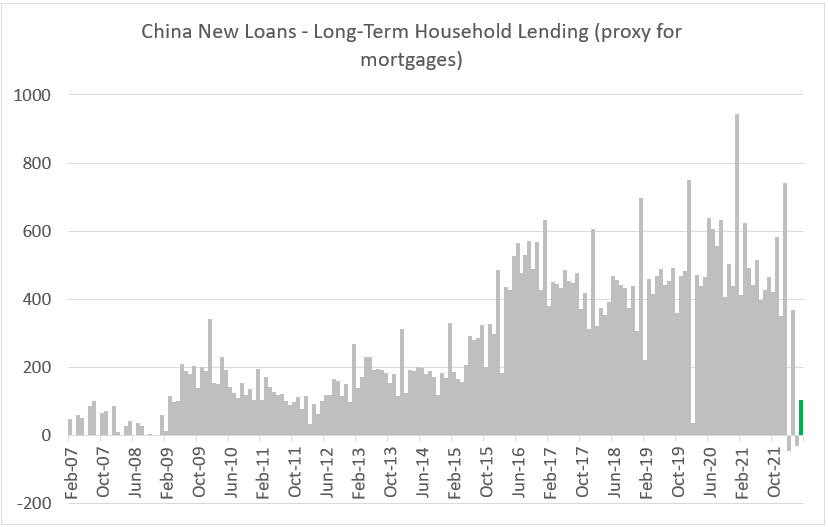By Natalia Gurushina
Chief Economist, Emerging Markets Fixed Income
The latest credit numbers confirm that China’s stimulus continues to focus on supply-side measures, and this in part explains a lack of inflation pressures.
Contrasting Inflation In China, U.S.
An ugly (=high + accelerating) inflation print in the U.S. – the morning’s global macro highlight – reaffirmed the market expectation of three consecutive +50bps rate hikes by the Federal Reserve, and lead to some fairly aggressive bear-flattening of the U.S. Treasury curve (short end up). Bloomberg reminded us that U.S. inflation just hit a 40-year high – a big contrast with the latest inflation print in China, which was (a) below consensus; (b) the lowest among major emerging markets (EM) (2.1% year-on-year); and (c) right in the middle of China’s multi-year inflation range. Why such a difference?
China’s Stimulus – Focus On Supply Side
One reason is that China’s policy stimulus is unapologetically supply-side driven – and the latest credit numbers clearly show that this is still the case. China’s aggregate financing surprised strongly to the upside in May, but it reflected a big jump in government bond issuance, presumably to finance infrastructure investment. Household lending did show some improvement, but one might need a magnifying glass to see May’s sequential rebound in a proxy for mortgages (see chart below). It is hard to see China’s local rates climbing much higher against this backdrop, and this means that the rate differentials with the U.S. should continue to move in the direction consistent with the weaker renminbi.
Turkey’s Dysfunctional Policies
In the immortal words of Star Trek’s Commander Spock, the things we just talked about are “logical” – i.e. higher inflation=higher short rates (and vice versa), changing interest rate differentials=moving currency crosses. This is not always the case in the “big countries, weird policies” corner of the world. Turkey refuses to hike despite headline inflation topping 70%. The last “out-of-the-box” scheme to support the lira is no longer working – the currency is trading above 17/U.S. Dollar – but instead of making an orthodox policy U-turn (=rate hikes), authorities came up with another “out-of-the-box” plan, which includes issuing new revenue-indexed bonds (whatever it is). Well, good luck… And stay tuned!
Chart at a Glance: China Mortgages Rebound – Get Your Magnifying Glass

Source: Bloomberg LP
PMI – Purchasing Managers’ Index: economic indicators derived from monthly surveys of private sector companies. A reading above 50 indicates expansion, and a reading below 50 indicates contraction; ISM – Institute for Supply Management PMI: ISM releases an index based on more than 400 purchasing and supply managers surveys; both in the manufacturing and non-manufacturing industries; CPI – Consumer Price Index: an index of the variation in prices paid by typical consumers for retail goods and other items; PPI – Producer Price Index: a family of indexes that measures the average change in selling prices received by domestic producers of goods and services over time; PCE inflation – Personal Consumption Expenditures Price Index: one measure of U.S. inflation, tracking the change in prices of goods and services purchased by consumers throughout the economy; MSCI – Morgan Stanley Capital International: an American provider of equity, fixed income, hedge fund stock market indexes, and equity portfolio analysis tools; VIX – CBOE Volatility Index: an index created by the Chicago Board Options Exchange (CBOE), which shows the market’s expectation of 30-day volatility. It is constructed using the implied volatilities on S&P 500 index options.; GBI-EM – JP Morgan’s Government Bond Index – Emerging Markets: comprehensive emerging market debt benchmarks that track local currency bonds issued by Emerging market governments; EMBI – JP Morgan’s Emerging Market Bond Index: JP Morgan’s index of dollar-denominated sovereign bonds issued by a selection of emerging market countries; EMBIG – JP Morgan’s Emerging Market Bond Index Global: tracks total returns for traded external debt instruments in emerging markets.
The information presented does not involve the rendering of personalized investment, financial, legal, or tax advice. This is not an offer to buy or sell, or a solicitation of any offer to buy or sell any of the securities mentioned herein. Certain statements contained herein may constitute projections, forecasts and other forward looking statements, which do not reflect actual results. Certain information may be provided by third-party sources and, although believed to be reliable, it has not been independently verified and its accuracy or completeness cannot be guaranteed. Any opinions, projections, forecasts, and forward-looking statements presented herein are valid as the date of this communication and are subject to change. The information herein represents the opinion of the author(s), but not necessarily those of VanEck.
Investing in international markets carries risks such as currency fluctuation, regulatory risks, economic and political instability. Emerging markets involve heightened risks related to the same factors as well as increased volatility, lower trading volume, and less liquidity. Emerging markets can have greater custodial and operational risks, and less developed legal and accounting systems than developed markets.
All investing is subject to risk, including the possible loss of the money you invest. As with any investment strategy, there is no guarantee that investment objectives will be met and investors may lose money. Diversification does not ensure a profit or protect against a loss in a declining market. Past performance is no guarantee of future performance.







